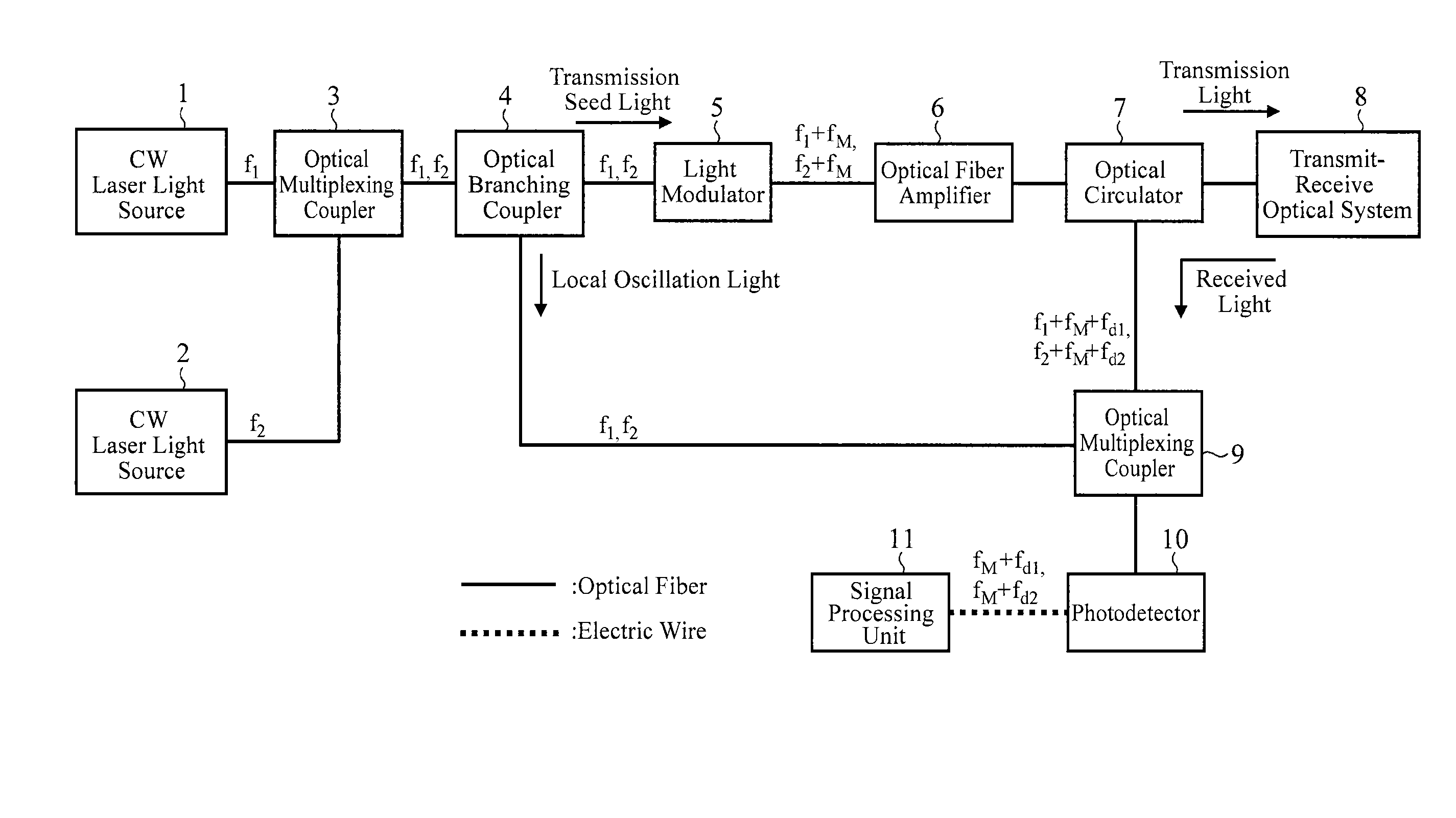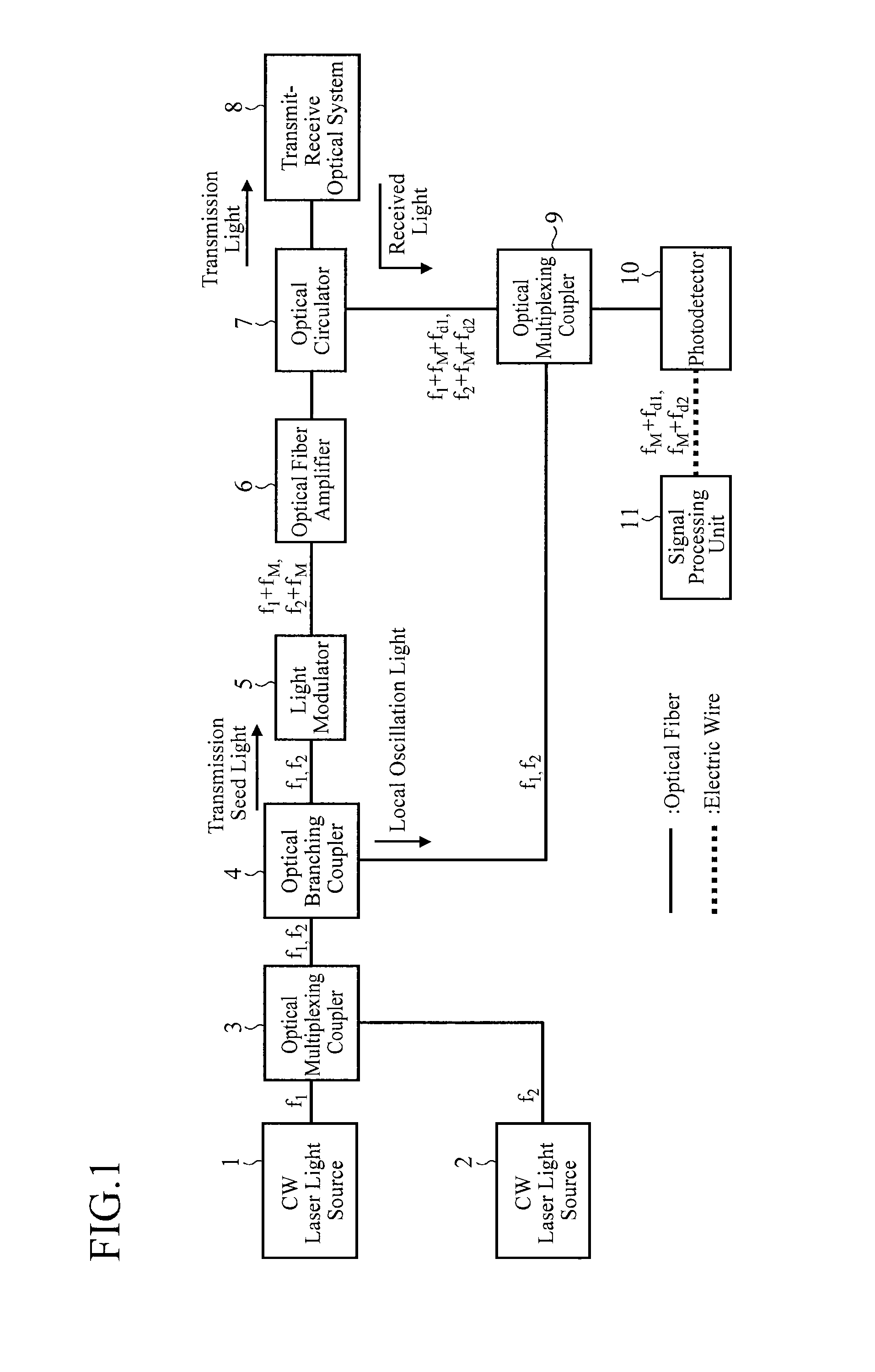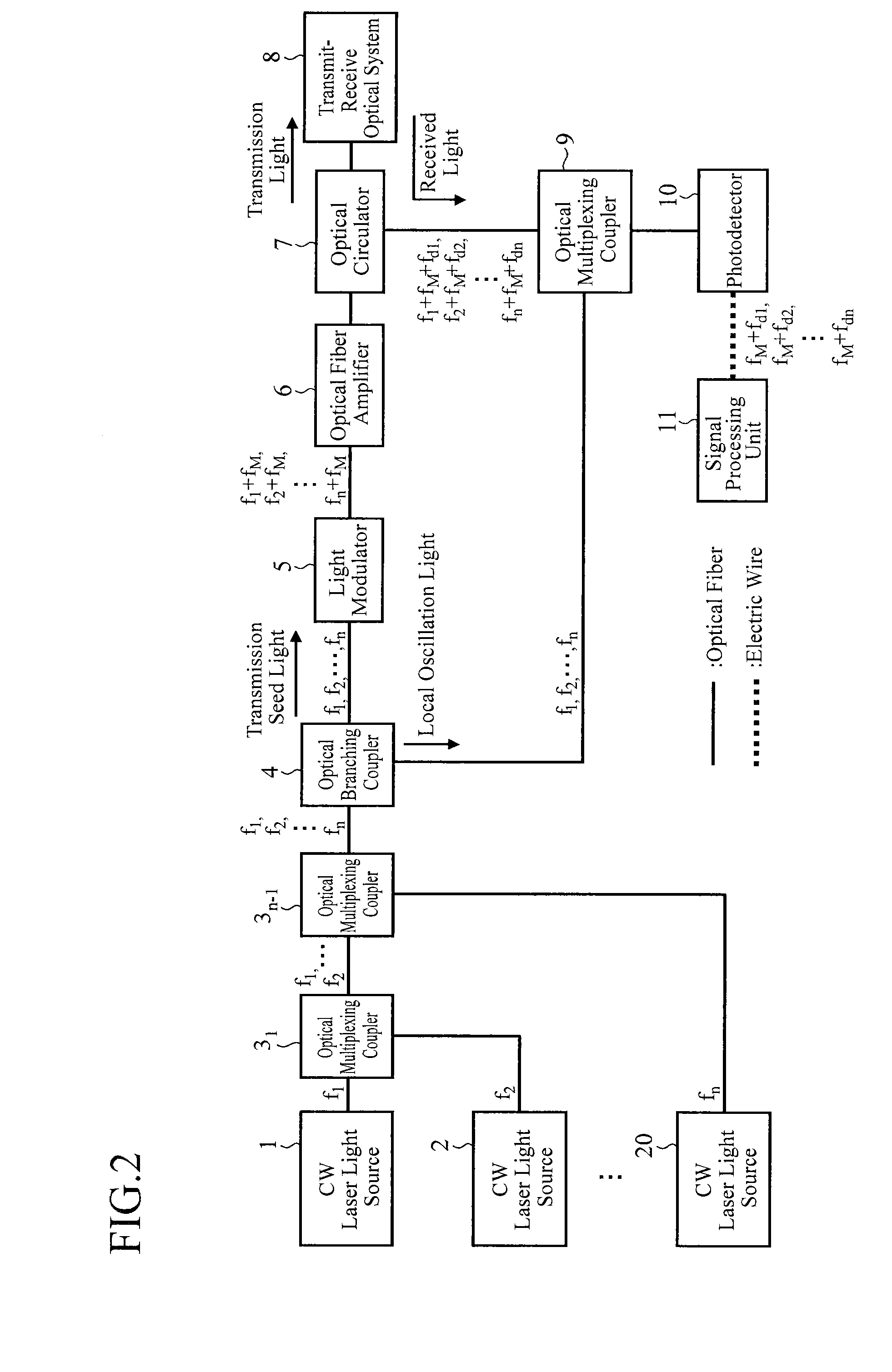Lidar
a technology of sliding distance and detector, applied in the field of sliding distance, can solve the problems of increasing the size of the detector, increasing the cost, and reducing the sn ratio of the coherent detection signal for the individual wavelengths, and achieve the effect of simple configuration and high sn ratio measuremen
- Summary
- Abstract
- Description
- Claims
- Application Information
AI Technical Summary
Benefits of technology
Problems solved by technology
Method used
Image
Examples
embodiment 1
[0019]FIG. 1 is a block diagram showing a configuration of a lidar of an embodiment 1 in accordance with the present invention.
[0020]In FIG. 1, a CW laser light source 1 is a light source that oscillates CW (Continuous Wave) laser light with frequency f1.
[0021]A CW laser light source 2 is a light source that oscillates CW laser light with frequency f2.
[0022]It is assumed here that the frequencies f1 and f2 of the CW laser light rays oscillated by the CW laser light sources 1 and 2 are within the gain band of an optical fiber amplifier 6, and that the difference between the frequency f1 and the frequency f2 is greater than the gain bandwidth of stimulated Brillouin scattering occurring in an optical fiber.
[0023]An optical multiplexing coupler 3 is an optical element that mixes the CW laser light with frequency f1 oscillated by the CW laser light source 1 and the CW laser light with frequency f2 oscillated by the CW laser light source 2. Incidentally, the optical multiplexing coupler ...
embodiment 2
[0092]The foregoing embodiment 1 shows an example comprising the two CW laser light sources 1 and 2 that oscillate the CW laser light rays with wavelengths different from each other. However, the number of the wavelengths of the laser light can be increased as long as the gain of the optical fiber amplifier 6 is large enough and the power of the laser light does not destroy the optical fibers or the optical elements on the transmitting optical path.
[0093]In the present embodiment 2, a lidar comprising n CW laser light sources will be described.
[0094]FIG. 2 is a block diagram showing a configuration of a lidar of the embodiment 2 in accordance with the present invention. In FIG. 2, since the same reference numerals as those of FIG. 1 designate the same or like components, their description will be omitted.
[0095]A CW laser light source 20 is a light source that oscillates CW laser light with frequency fn.
[0096]The example of FIG. 2 comprises n (n=1, 2, . . . , n) CW laser light source...
embodiment 3
[0110]FIG. 3 is a block diagram showing a configuration of a lidar of an embodiment 3 in accordance with the present invention. In FIG. 3, since the same reference numerals as those of FIG. 1 designate the same or like components, their description will be omitted.
[0111]The optical branching coupler 21 is an optical element that splits the CW laser light with frequency f1 oscillated by the CW laser light source 1 into two parts, and that supplies first CW laser light to a light modulator 23 as the transmission seed light and second CW laser light to an optical multiplexing coupler 26 as the local oscillation light.
[0112]The optical branching coupler 22 is an optical element that splits the CW laser light with frequency f2 oscillated by the CW laser light source 2 into two parts, and that supplies first CW laser light to a light modulator 24 as the transmission seed light and second CW laser light to an optical multiplexing coupler 26 as the local oscillation light.
[0113]Incidentally...
PUM
 Login to View More
Login to View More Abstract
Description
Claims
Application Information
 Login to View More
Login to View More - R&D
- Intellectual Property
- Life Sciences
- Materials
- Tech Scout
- Unparalleled Data Quality
- Higher Quality Content
- 60% Fewer Hallucinations
Browse by: Latest US Patents, China's latest patents, Technical Efficacy Thesaurus, Application Domain, Technology Topic, Popular Technical Reports.
© 2025 PatSnap. All rights reserved.Legal|Privacy policy|Modern Slavery Act Transparency Statement|Sitemap|About US| Contact US: help@patsnap.com



